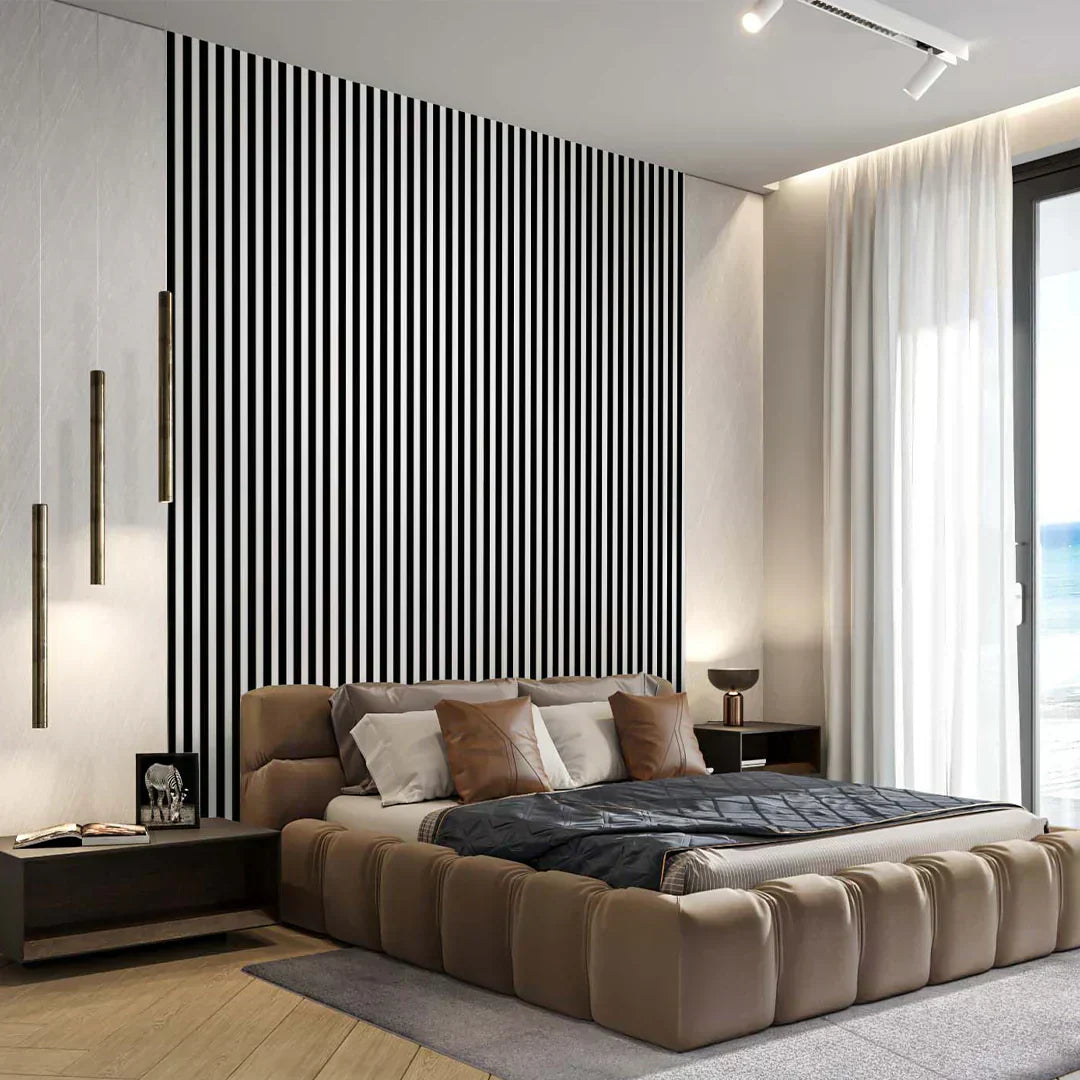
5 Mistakes That Ruin Peel-and-Stick Wallpaper in Bathrooms
Adding peel-and-stick wallpaper in the bathroom is one of the easiest ways to transform a simple space into one full of style and personality. But bathrooms can be challenging: heat, steam, and humidity can cause the wallpaper to peel, bubble, or stain if the proper precautions aren’t taken.
To help your project succeed, here are the 5 most common mistakes when wallpapering bathrooms—and how to avoid them for a beautiful, long-lasting result.
1. Applying Wallpaper on Damp or Unprepared Walls
The most common mistake is sticking wallpaper directly onto damp or poorly prepared surfaces. Even a little moisture or soap residue prevents the adhesive from working properly, causing bubbles or peeling within days.
How to avoid it:
- Clean the wall thoroughly with mild detergent and let it dry for at least 24 hours.
- Use a lint-free cloth to remove dust and debris.
- Make sure the wall is completely dry, with no moisture or condensation.
- Never apply wallpaper immediately after a hot shower; wait for the bathroom to ventilate.
2. Choosing the Wrong Type of Wallpaper
Not all wallpapers are created equal. Many use traditional paper designs that don’t withstand humidity, leading to peeling, warping, or even mold growth.
How to avoid it:
- Opt for peel-and-stick wallpapers labeled as moisture-resistant for bathrooms.
- Look for vinyl or laminated materials that repel water.
- Avoid 100% paper wallpapers near showers or sinks.
- Tile or marble effect wallpapers are stylish and durable options.
3. Ignoring High-Humidity Areas (Like Inside the Shower)
Even the best wallpaper can fail if installed in direct contact with water, such as inside the shower. Constant exposure weakens the adhesive and damages the wallpaper.
How to avoid it:
- Install wallpaper away from direct water contact, such as above the sink backsplash or behind the toilet.
- Use tiles or waterproof panels on shower or bathtub walls.
- Seal edges with caulk or clear sealant to create a moisture barrier.
4. Skipping Proper Ventilation
Bathrooms without good ventilation are wallpaper’s worst enemy. Accumulated steam can cause bubbling, peeling, or mold behind the wallpaper.
How to avoid it:
- Use an exhaust fan or keep a window open to reduce humidity after showering.
- Consider a dehumidifier if your bathroom retains a lot of moisture.
- Ensure the wallpapered area can dry quickly—air circulation is key.
5. Not Sealing or Protecting the Wallpaper
Many assume peel-and-stick wallpaper is waterproof, but it’s usually only moisture-resistant. Without extra protection, steam can damage the adhesive over time.
How to avoid it:
- Apply a clear matte sealant (like polyurethane) in splash-prone areas.
- Use wallpaper-specific sealants available at hardware stores.
- If the wallpaper gets wet, gently dry it immediately.
Extra Tip: Test Before Installing
Before covering the entire wall, test a sample in your bathroom to see how it reacts to humidity and steam over several days. This lets you check adhesion, colorfastness, and texture without risk.
Final Thoughts
Wallpaper installation mistakes in bathrooms are common but easy to avoid. With proper preparation, suitable materials, and care, peel-and-stick wallpaper can be an elegant, durable, and stylish transformation for your space.
Explore our collection of peel-and-stick bathroom wallpapers or contact our design experts to help you choose the best option.
